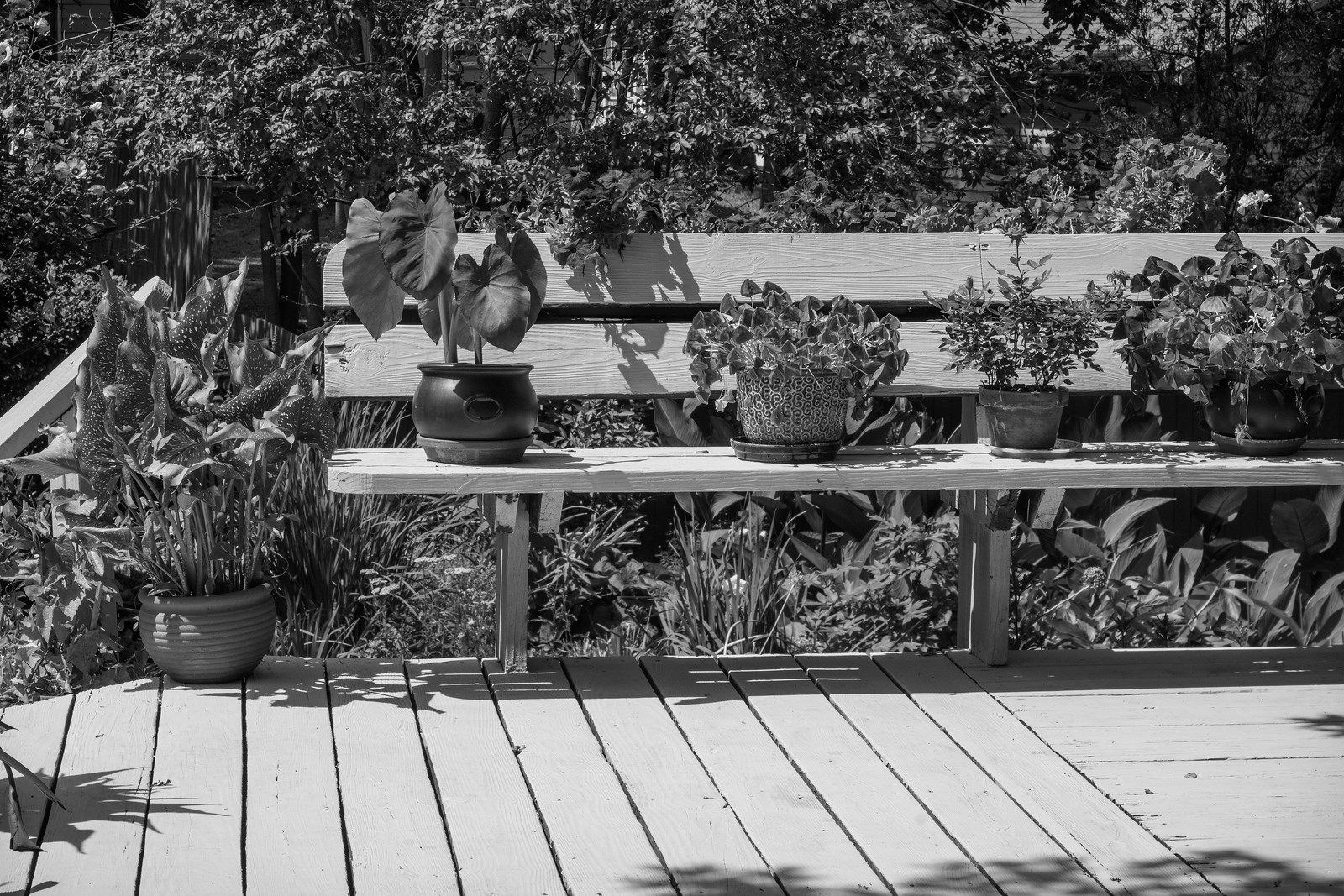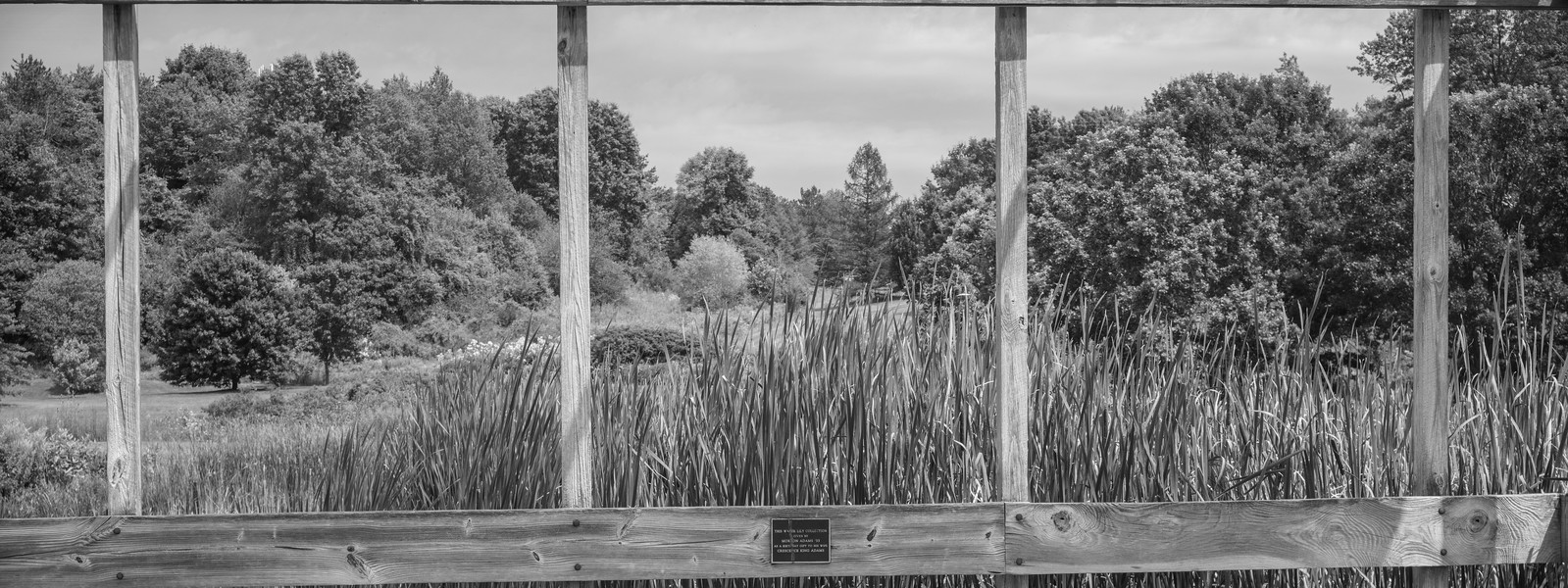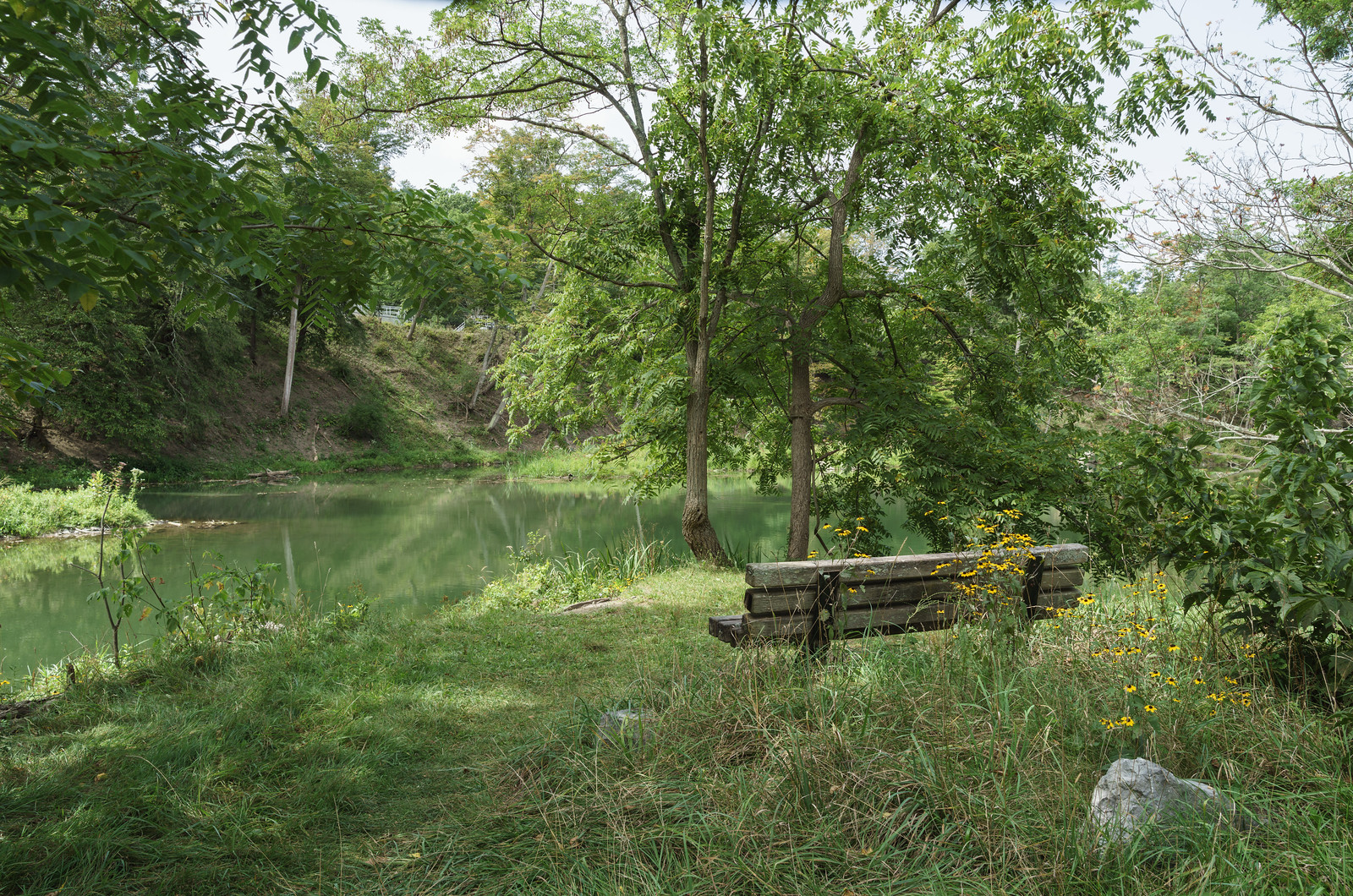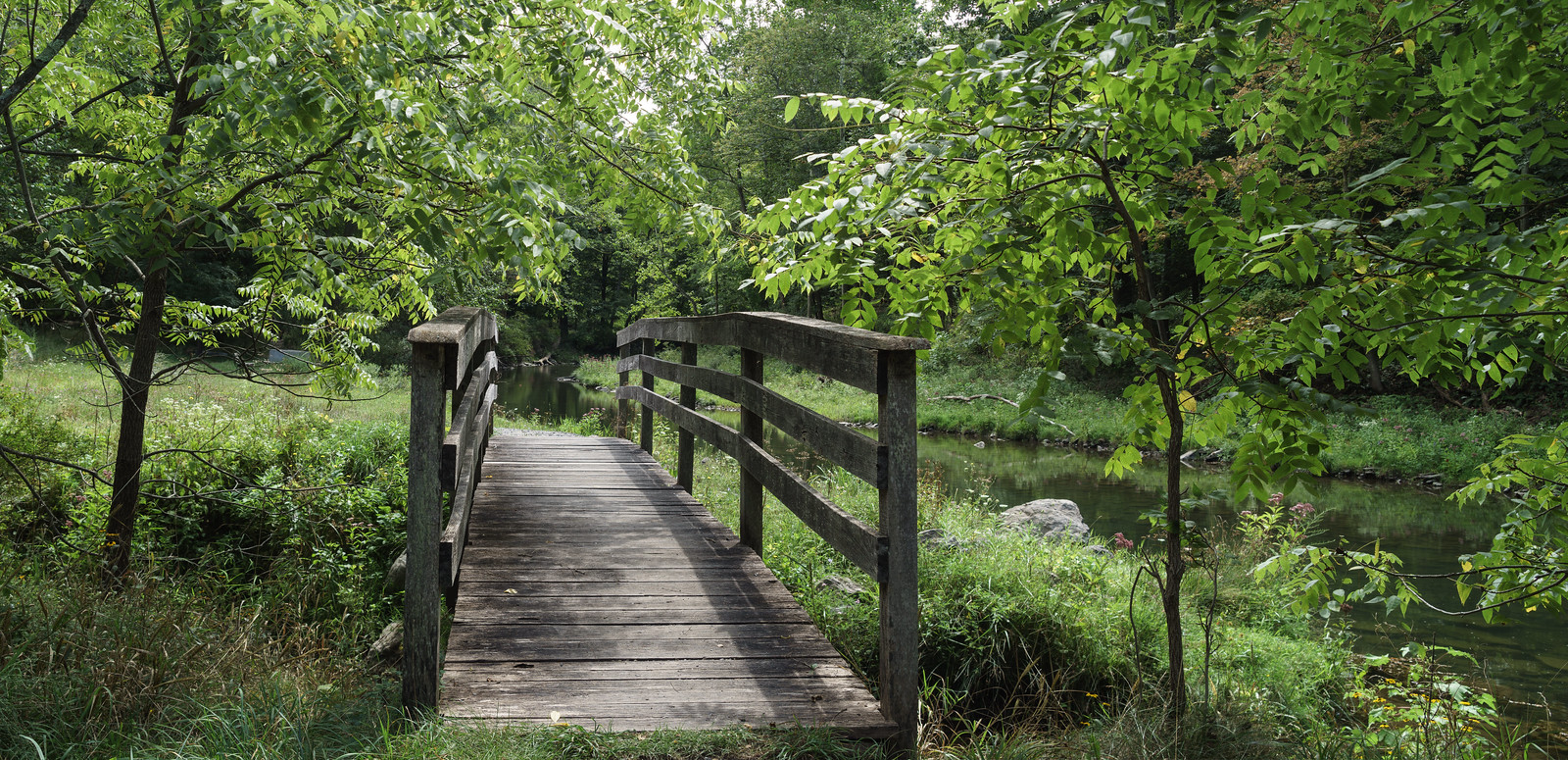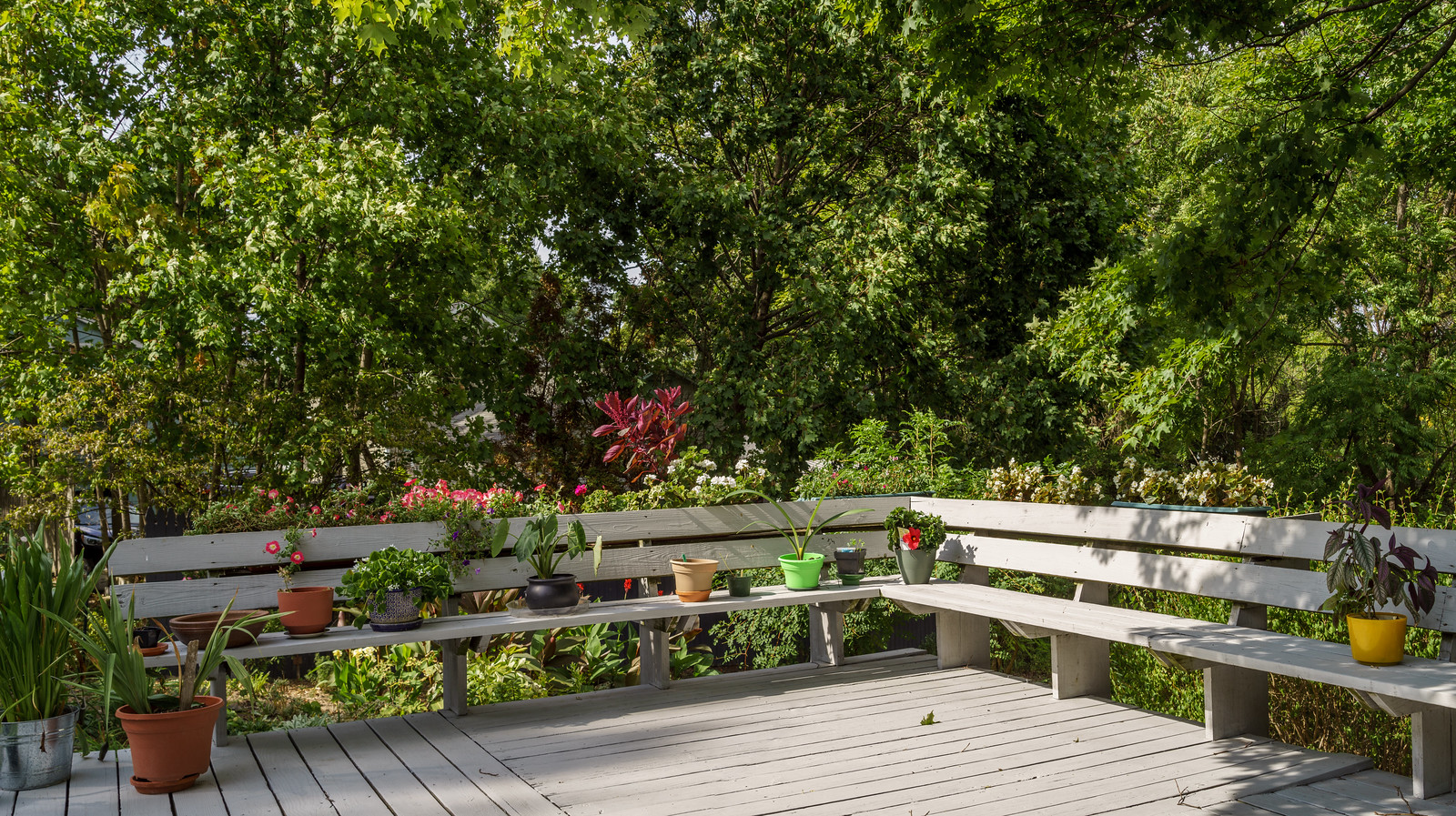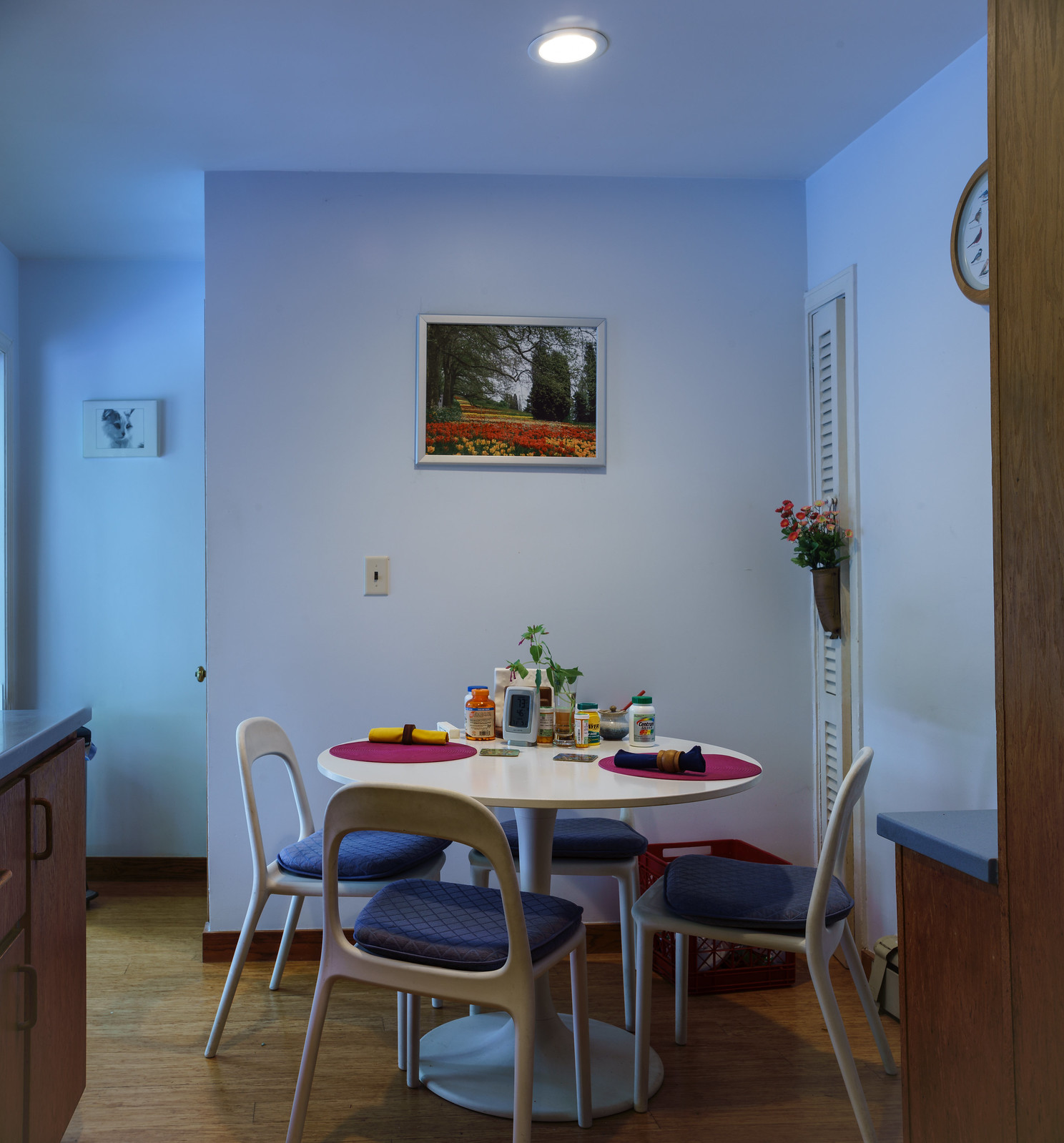The GetDPI Photography Forum
Great to see you here. Join our insightful photographic forum today and start tapping into a huge wealth of photographic knowledge. Completing our simple registration process will allow you to gain access to exclusive content, add your own topics and posts, share your work and connect with other members through your own private inbox! And don’t forget to say hi!
A7RII + Cambo Actus
- Thread starter scho
- Start date
Audii-Dudii
Active member
Actually, adding front rise is now possible ... well, sort of.Front swing and tilt, rear rise/fall and shift.
At some point (I'm not certain when, but I believe it was in conjunction with the release of the DB version of the Actus), Cambo started machining a second mounting hole/recess into its lens panels, as shown below:

These two holes are spaced 8mm apart and the Actus normally uses the upper hole, which maximizes the contact area between the lens panel and front standard.
However, by using the bottom hole, it's possible to achieve a fixed 8mm of front rise, which might prove useful to some photographers, in some situations. The reduction in contact area between the lens panel and standard is presumably not an issue, either, because if it was, Cambo surely would have designed a second lens panel instead of adding a second hole to their existing lens panel ... am I right?
And if 8mm is too much rise, any competent machinist can add a third hole/recess in between the existing two to achieve a lesser amount of rise or even add a beveled slot between the two existing holes to achieve a variable amount of front rise between 0 and 8mm by using the clamp to hold the lens panel in place at the desired point.
Mind you, this rise movement won't be geared, so it might prove tricky to add small, precise amounts this way, but view cameras have successfully used non-geared, sliding movements for several generations without too much issue. Cambo must agree with this approach, too, at least in principle, because the Actus' rear shift movement isn't geared and works essentially the same way, except it slides laterally instead of vertically.
Of course, I can't vouch for how well the clamping screw will hold when used with a slot instead of a recess, but I can confirm that it clamps down quite securely on the lens panel in its original, unmodified form and unless the lens being used is extraordinarily heavy, I'll bet it will hold just fine.
If it doesn't, then it's not a big deal, because the lens panel will still work just fine with zero front rise applied, so one won't need to replace it and will only be out the cost of having it modified.
In fact, now that I've mentioned the possibility of adding a slot between the two existing holes out loud, I may just have to try it myself, if only because I can.
scho
Well-known member
None of my lens plates have the double hole, but except for the Pentax 645 plate all were purchased a few years ago. Rear rise/fall is adequate for my needs, but I don't do much architectural photography.Actually, adding front rise is now possible ... well, sort of.
At some point (I'm not certain when, but I believe it was in conjunction with the release of the DB version of the Actus), Cambo started machining a second mounting hole/recess into its lens panels, as shown below:

These two holes are spaced 8mm apart and the Actus normally uses the upper hole, which maximizes the contact area between the lens panel and front standard.
However, by using the bottom hole, it's possible to achieve a fixed 8mm of front rise, which might prove useful to some photographers, in some situations. The reduction in contact area between the lens panel and standard is presumably not an issue, either, because if it was, Cambo surely would have designed a second lens panel instead of adding a second hole to their existing lens panel ... am I right?
And if 8mm is too much rise, any competent machinist can add a third hole/recess in between the existing two to achieve a lesser amount of rise or even add a beveled slot between the two existing holes to achieve a variable amount of front rise between 0 and 8mm by using the clamp to hold the lens panel in place at the desired point.
Mind you, this rise movement won't be geared, so it might prove tricky to add small, precise amounts this way, but view cameras have successfully used non-geared, sliding movements for several generations without too much issue. Cambo must agree with this approach, too, at least in principle, because the Actus' rear shift movement isn't geared and works essentially the same way, except it slides laterally instead of vertically.
Of course, I can't vouch for how well the clamping screw will hold when used with a slot instead of a recess, but I can confirm that it clamps down quite securely on the lens panel in its original, unmodified form and unless the lens being used is extraordinarily heavy, I'll bet it will hold just fine.
If it doesn't, then it's not a big deal, because the lens panel will still work just fine with zero front rise applied, so one won't need to replace it and will only be out the cost of having it modified.
In fact, now that I've mentioned the possibility of adding a slot between the two existing holes out loud, I may just have to try it myself, if only because I can.
scho
Well-known member
A four shot stitch from the same setup as above. Click for full size original.
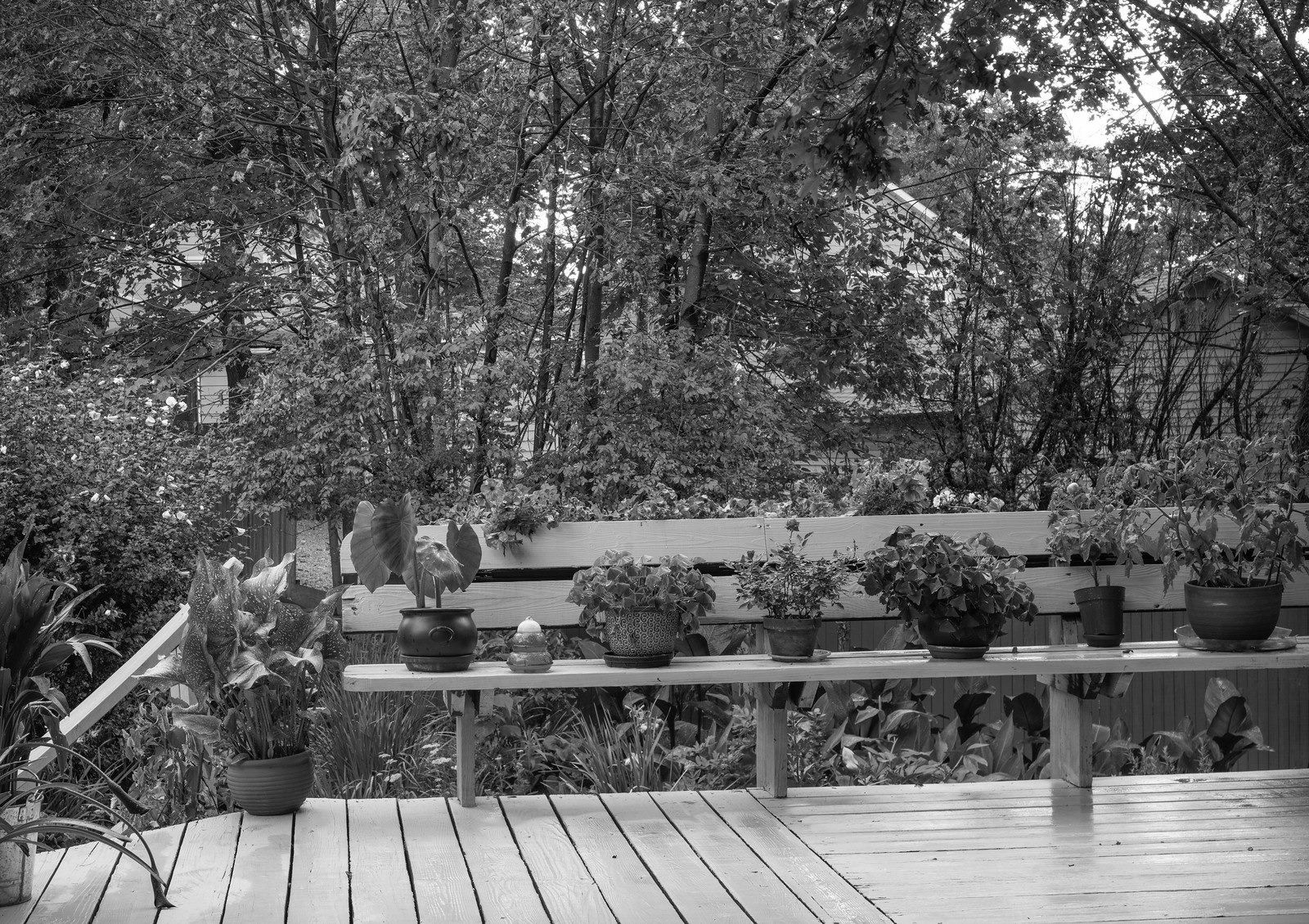
Audii-Dudii
Active member
If you have older lens panels, adding a second hole isn't a huge task. Not sure what to say about the Pentax plate, except maybe it wasn't recent production?None of my lens plates have the double hole, but except for the Pentax 645 plate all were purchased a few years ago. Rear rise/fall is adequate for my needs, but I don't do much architectural photography.
Or maybe I was told wrong and the second holes haven't been added to the lens plates universally? (I only have this one, but I've seen photos of other lens plates with two holes.)
But I do agree with you that the existing amount of rear rise / fall is adequate for me, especially because I use lenses with limited image circles and photograph primarily architecture, where rear movements are generally preferred over front movements.
But it's nice to know that if I ever do run out of rear fall movement, I can easily add another 8mm indirectly by raising the front standard.
CAMBOUSA
Member
If I remember correctly the double hole is a more recent addition to the Actus lens boards.
It was added specifically on boards designed for use with the Actus DB (Copal 0, Copal 1, ACB-ALP Alpa, ACB-WRS WRS).
I just did a spot check on some boards that I have here and the Alpa board and a Copal 1 board both have the second hole. But from the same "batch" I have a Pentax 645 and Mamiya 645 board that both do not have the second hole.
In an official capacity I can't comment about the addition of a second hole to boards without, but I would be willing to say if you do try it please be careful as it would void any warranties on said boards.
It was added specifically on boards designed for use with the Actus DB (Copal 0, Copal 1, ACB-ALP Alpa, ACB-WRS WRS).
I just did a spot check on some boards that I have here and the Alpa board and a Copal 1 board both have the second hole. But from the same "batch" I have a Pentax 645 and Mamiya 645 board that both do not have the second hole.
In an official capacity I can't comment about the addition of a second hole to boards without, but I would be willing to say if you do try it please be careful as it would void any warranties on said boards.
GrahamWelland
Subscriber & Workshop Member
Me too. All of my Copal lens boards have the double holes and I've had the Actus DB/DB+ and Sony versions from when they first came out.My copal boards have 2 holes and I have had them for quite a while (2 years?)
scho
Well-known member
No second hole on these copal plates:Actually, adding front rise is now possible ... well, sort of.
At some point (I'm not certain when, but I believe it was in conjunction with the release of the DB version of the Actus), Cambo started machining a second mounting hole/recess into its lens panels, as shown below:
These two holes are spaced 8mm apart and the Actus normally uses the upper hole, which maximizes the contact area between the lens panel and front standard.
However, by using the bottom hole, it's possible to achieve a fixed 8mm of front rise, which might prove useful to some photographers, in some situations. The reduction in contact area between the lens panel and standard is presumably not an issue, either, because if it was, Cambo surely would have designed a second lens panel instead of adding a second hole to their existing lens panel ... am I right?
And if 8mm is too much rise, any competent machinist can add a third hole/recess in between the existing two to achieve a lesser amount of rise or even add a beveled slot between the two existing holes to achieve a variable amount of front rise between 0 and 8mm by using the clamp to hold the lens panel in place at the desired point.
Mind you, this rise movement won't be geared, so it might prove tricky to add small, precise amounts this way, but view cameras have successfully used non-geared, sliding movements for several generations without too much issue. Cambo must agree with this approach, too, at least in principle, because the Actus' rear shift movement isn't geared and works essentially the same way, except it slides laterally instead of vertically.
Of course, I can't vouch for how well the clamping screw will hold when used with a slot instead of a recess, but I can confirm that it clamps down quite securely on the lens panel in its original, unmodified form and unless the lens being used is extraordinarily heavy, I'll bet it will hold just fine.
If it doesn't, then it's not a big deal, because the lens panel will still work just fine with zero front rise applied, so one won't need to replace it and will only be out the cost of having it modified.
In fact, now that I've mentioned the possibility of adding a slot between the two existing holes out loud, I may just have to try it myself, if only because I can.
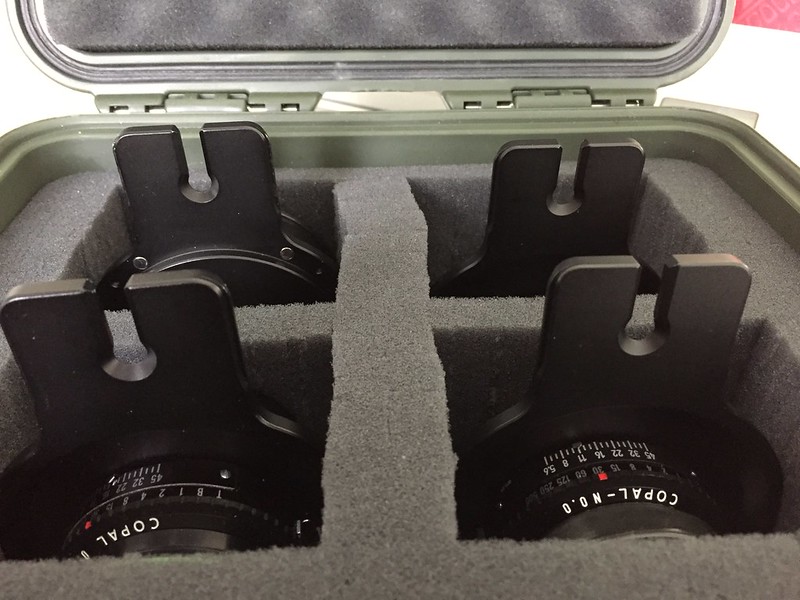
Audii-Dudii
Active member
I believe it's now been clearly established by an official source that the second holes appear only on those lens panels (plates? boards?) that are also intended to be used with the Actus DB (and GFX?) versions.No second hole on these copal plates:

Yours, by your own admission, appear to predate the introduction of the DB version hence have only the one hole.
Presumably, this is because only a fool like me would ever think of turning the second hole into a quasi front rise movement!
Or for that matter, using the original Actus as a tilt-shift adapter with a variety of 35mm-format lenses and a camera body with a 35mm-format sensor... :loco:
Last edited:
except 2 people have posted to the contrary, me and Graham both have double holes on copal boards, my actus was purchased very early on soon after release, there was no DB version available then, no W/A sony rear standard available either. things might be different with current inventory.I believe it's now been clearly established by an official source that the second holes appear only on those lens panels (plates? boards?) that are also intended to be used with the Actus DB (and GFX?) versions.
Yours, by your own admission, appear to predate the introduction of the DB version hence have only the one hole.
scho
Well-known member
Same here. I purchased the original Actus right after release in 2014 with 2 Copal 0 plates and two more plates in 2015 - all with no second hole (?).except 2 people have posted to the contrary, me and Graham both have double holes on copal boards, my actus was purchased very early on soon after release, there was no DB version available then, no W/A sony rear standard available either. things might be different with current inventory.
Woody Campbell
Workshop Member
do the Rodenstock retro focus wides (such as the Digaron-s 23) reach infinity focus?[h=1][/h]
Audii-Dudii
Active member
No ... the rear element of the lens is too large.do the Rodenstock retro focus wides (such as the Digaron-s 23) reach infinity focus?[h=1][/h]
Specifically, its diameter is too wide and it projects too far rearward for the plain-jane Actus Mini to accommodate it, even when the camera is used with its optional, non-rotating rear standard.
This article explains the reasons why this is so.
I believe the DB2 might accommodate it, but it will require the use of a digital back instead of a mirrorless camera body (or possibly a custom mount for a mirrorless camera body? I haven't seen a DB2 in person yet, so can't say for certain how realistic an option this may or may not be.)
Woody Campbell
Workshop Member
Very good article - thanks.No ... the rear element of the lens is too large.
Specifically, its diameter is too wide and it projects too far rearward for the plain-jane Actus Mini to accommodate it, even when the camera is used with its optional, non-rotating rear standard.
This article explains the reasons why this is so.
I believe the DB2 might accommodate it, but it will require the use of a digital back instead of a mirrorless camera body (or possibly a custom mount for a mirrorless camera body? I haven't seen a DB2 in person yet, so can't say for certain how realistic an option this may or may not be.)
I wondered about using my Cambo Schneider lenses with an Actus but was told that they wouldn't focus to infinity. Do you have any trouble?
Tried doing some stitching with the Leica R 35-70 Vario-Elmar f/4 on the Cambo Actus with Sony A7R-FS (CC filter on lens). Two images below are composed of two shots each stitched with Photomerge in LR.
Barely enough room to shift inside the relatively small image circle of the 35-70 @ 35 mm. I'm going to try some of my Pentax 645 lenses next, particularly the Pentax 645 A 35/3.5.
scho
Well-known member
I only use LF lenses with focal lengths greater than 40mm, so no problems reaching infinity focus.I wondered about using my Cambo Schneider lenses with an Actus but was told that they wouldn't focus to infinity. Do you have any trouble?
naturephoto1
New member
Hi,There are a few ways to look at this. On the traditional Rodenstock and Schneider options, because of the Flange Focal Distance (FFD), you are looking at lenses 70mm and greater having full compatibility. The 55mm Apo Sironar digital lens should focus to infinity, but because of it's design will not give you much (if any) movement.
M39 enlarger lenses 60 and above should work no problem.
And of course, the Actar 60 would give you infinity focus and around 15-17mm of shift depending on your orientation.
As to not clog up the Sony thread with Leica, please feel free to email or PM me any further questions about this setup.
This is my first post though I have lurked in the background and purchased in the group. But after reading your post regarding the Rodenstock 55mm f4.5 Apo Sironar Digital lens, I thought that your comments were incorrect due to my experience. So, I went back and tried my lens on my Actus with one of my A7r cameras. I tested only visually without taking an image, the lens focused to about infinity (homes behind my house hundreds of feet away though the foreground was much closer. Unless I am in error, and focused at what would be close to infinity I did not find any restriction both in landscape and portrait mode using the full 27mm of rise/fall (though I forgot to remove the L bracket that caused interference in the last 5mm of fall in the portait mode) and the full 40mm of shift (20mm L and 20mm R) limited only by camera design without restrictions of rise and fall with the Actus Mini camera. I did not check to see if 3 rows of 3 images could be taken without a hitch, but I would suspect so.
I then went back and also tested only visually without taking an image my Rodenstock 50mm f2.8 Apo Rodagon N Enlarger lens mounted on a special adapter that allowed the lens to be mounted on my Cambo modified Leica R Cambo Actus lens board (Cambo modified the board lens release so that I could mount and remove my Leica/SK 28mm f2.8 Super Angulon PC lens). My visual tests suggest that the lens can be used with about 8mm of left and right shift in the landscape mode and about 9 mm of shift in the portrait mode when focused close to infinity.
Rich

